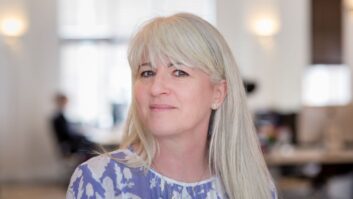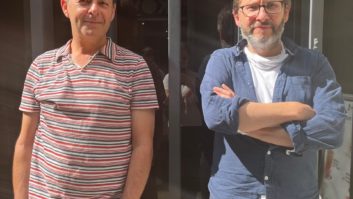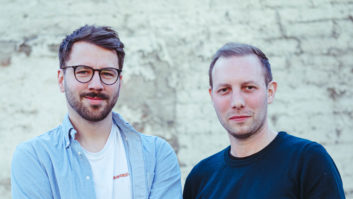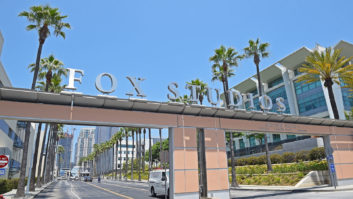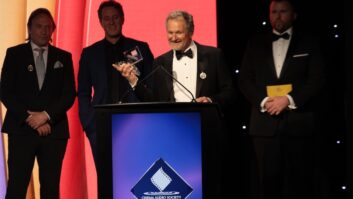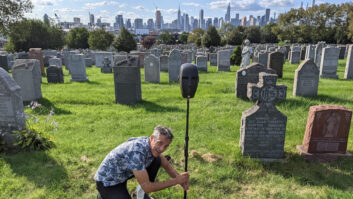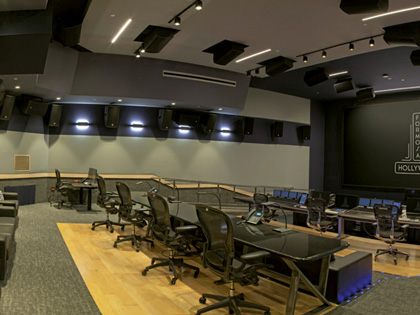
Formosa Group moves fast. Even by Hollywood standards, where the semblance of a small town can be put up in a morning and torn down at the end of a day, Formosa Group moves fast. Not randomly, not without direction. Just fast, and with a vision.
In the past 10 months, Formosa has opened five new re-recording stages and about 30 new editorial rooms, built from scratch in two new locations, to support the launch of a new broadcast/televison division in January 2017. That is in addition to the previous three years of refurbish- ing existing stages and rooms in Santa Monica, upgrading three stages and editorial on The Lot in West Hollywood and outfitting a building down the street for Oscar-winning sound supervisors Mark Mangini and Per Hallberg/Karen Baker Landers.

Oh! Plus, the formation of five divisions, five pillars of sound: Feature Film, Interactive, Music, Commercials and now Broadcast. From zero to 200 employees, roughly half of them editors and mixers. Four years ago, Formosa Group was simply an idea that was being tossed around by industry veterans Bob Rosenthal and Matt Dubin—an idea based on talent, not facilities.
“We didn’t build this company based on market,” says Rosenthal, Formo- sa founder and CEO, whose background is in finance but whose heart is in entertainment. “We built it based on relationships, and the people we had strong relationships with were feature film supervising sound editors and mixers. That gave us an opportunity to build a brand and create excitement.
“People who committed early on—Mark Mangini, Odin Benitez, Mar- tyn Zub, Mark Stoeckinger and a few others—they committed before we built out the environment, before we had acoustically treated walls,” he continues. “They believed in the idea of what we wanted to do as much as the reality of it.”
The idea of an independent audio post-production company serving high-profile projects, amid the web of film studios with their own sound departments, is not new. The rise and fall of independents has been
art ofthe industry cyclesince the 1950s,from RyderSoundto Todd-AOto Soundelux, Wed- dington,Skywalker Soundand others.What’sdifferentthistime isthat Formosastarted withthe assemblyofa largeanddiverse collectionoftalent.
“Theideaisthatif youattract thecreative talentandmake somethingtheywanttobeapart of,the restwill follow,”says For- mosa ExecutiveVPDubin, who first workedwith Rosenthalat Todd-AOLantanain2008 when thelatterwas president ofCSS Studios. “Our beliefwasthatthe shiftoftheindustrywasashiftin theparadigm,andworkflowwas changing. Moretimewas being spentontheeditorialside, which doesn’tmeanthat mixingisany lessavitalpart ofthe process. It’sjust that more is happen- inginthesmaller rooms,inthe editorialand the sounddesign portionof theprocess.Editors whomightalsomix. Wemadea consciousdecisionto focus ini- tiallyon featurefilm soundsu- pervisors.Those arethe people we had relationshipswith.”
Tobefair,manyofthose re- lationshipswerealreadyin place, and Formosadidn’tsuddenlyap
StageX at Formosa NoHo, built primarily to go with the company’s expansion into television editorial/mixing theDepartmentof Water& PowerthattheirfacilitiesonTheLotwould berazedinfavorof residentialpowerneeds.
“Itwasagut-wrenchmoment,”Dubin recalls. “Itwas awful,”adds Rosenthal, who keptthethreatandearlynegotia- tionsprivatebetweenhimandDubin.“Wethought, ‘Isthistoo muchto overcome?’ Wehadbuiltasignificantcompanybythen,andhad multiple facilitiesin multiple markets. Ithink that ourdiversification helpedus withtheabilitytodealwithasurpriselikethat.”
Allinvolvedatthetimecredit Formosa Groupowners—BarbaraGlaz- er,Mike Greenfield, Tim Nettand Craig Murray,alsoownersofPicture Head/Audio Head—withhavingthevisionand fortitudetomove forward andfindnewfacilities.Sotheydid. Twiceinone year.
“You have to give kudos to the Picture Head partners,” says Johnston, Formosa VP of engineering. “Faced with this crisis at The Lot, they allowed us to do 959 and were in it wholeheartedly. And halfway through that, they said, ‘Sure, build more in North Hollywood.’ My jaw dropped. This just doesn’t happen today. But they hada vision, and the cojones to pull the trigger.”
Johnston isa longtime veteran in the trenches of independent facility construction and operation, working simultaneously across multiple pearfromnowhere. Rosenthal,DubinandVPof Engineering Bill JohnstonwereallpartoftheSoundelux-Todd-Liberty-Ascent-Discovery-CSS consolidation. Rosenthal leftoneweekaftertheoperation wassoldto equitypartners in2012,andhesaw wheretheywereheaded(i.e.,closing stages,trimming resources).Dubin followedsoonafter.Then Johnston was letgoinanearly cost-cutting round.
Rosenthal andDubinmetupa fewmonths laterwithin thePicture Head/Audio Head footprint onTheLot,ahistoric Hollywoodstudio complex,andtheybegantoengagesupervisors,manyofthem formercol- leagues whowere looking forahome.Theyalso reachedoutacrosstown, recognizingtheneed fordiversityandfreshtalent. TheLot,withthree stages,anADRstage,and12 rebuilteditorial rooms,wouldbethebase, withmoretocomeinSanta Monicaatthe formerPOPSoundfacilities.
Everythingwas humming alongtwo yearsin.Theinteractive group hadlaunched, Modern Music cameoveressentiallyintactunderthe lead- ershipofLeigh Kotkinto forma musicdivision,andthere wasaneye ontelevision. Butthefivenewstageswerenotintheoriginalthree-year plan. Neitherwasthenewheadquartersat959Seward.Thingswerejust settlingdown whenabouttwo yearsago Rosenthal receivednoticefrom rooms in multiple facilities from back in his early days at Soundelux. Once Rosenthal and team settled on 959 Seward as the new company headquar- ters (they have maintained three stages on The Lot), Johnston met with the architects the next day and began laying out the audio needs, in CAD.
“I’vealwayslikedmedium-sizedstages,” Johnstonsays.“Thebuilding ownersworkedwithusandweregreat.Thingslike,weaskedthem to digdowntwo feetinthefront ofeachofthemain roomstogetmore ceilingheight,andtheydidit! Without that two feet, youwouldn’tget thatsizeofscreen,anditwouldhave feltcramped. Nowit feelsright. It wasanemptyshellinOctober2016,andwemovedin January2017.Then simultaneously westartedworkingon plans forthreemorestagesanda completebuildoutin NoHo.Thatopenedofficiallyin June.”
Johnston,aself-proclaimedmasterof‘valueengineering,’hasoutfitted themain featurestageswith AvidS6consoles, keepingthe TV roomson Icon D-Control, whichhesaysthemixersprefer.All roomsuse RedNet I/O,Pro Tools recording and playback,andJBL5532monitors powered by Crown8600SeriesampswithBSScontrol. Theeditorial supervisor rooms, the backbone ofthe company, feature JBL6332swith Crown amps.Thereisn’tapatchbayineithernewfacility;it’sall routers.
“We’ve gotten to a very concise and simplified workflow,” Johnston explains. “You edit to Pro Tools, you dub to Pro Tools, and you play Pro Tools back on the stage. To get 64 channels of I/O is two rackspaces of RedNet, and they all hook up and network together. There really isn’t a lot to these rooms anymore, whether MADI or RedNet. I’ve always been a guy who tries to simplify the process—put a lot of power in the right plac- es. If you save money in one place, you can buy more plug-ins. Processing. That’s where the power is.
“Also, we’re first and foremost an editorial company, and largely mobile,” he continues. “We have multiple facilities in multiple locations, and we have editorial teams that might pick up all their systems and move over to Fox or Warner or Sony for four weeks. We have to simplify the process.”
Editorial teams are often mobile these days, especially at indepen- dent facilities that feed the re-recording stages on the studio lots. When setting up the company, from Day One, Rosenthal and Dubin were aware of coming on too strong. It wasn’t about them, and it wasn’t about filling their rooms; it was about servicing the filmmakers.
“We were sensitive to the fact that the studios have their own sound departments, and their own goals to use those facilities as best as possible,” Rosenthal says. “But they also understand that this is a relation- ship-based segment of post-production. We have to be sensitive to the fact that the studios are clients, as well, so we need to collaborate with them where it makes sense. That was an early message. Collaborate with studios, and let the filmmakers decide who they want as a supervisor and what mixing team they want.”
While the DWP disruption forced the company’s hand, and they ended up making lemonade out of a lemon of a situation, the ancillary benefit is that it allowed them to centralize admin and support ser- vices, as well as bring more editors together under a single roof. From the beginning, Rosenthal and Du- bin would talk about building a community of cre- ative people who wanted to work together, wanted a home, from the executive team down to the runners.
That sense of community is something that many supervising sound editors and creative teams were looking for. Per Hallberg and Karen Baker Landers, an award-winning team for some 30 years, were early adoptees. “We were looking for a place where we would feel at home,” Hallberg says, “with people we like and who understand what we need. Bob’s goal has always been to make us comfortable and to be supportive, to give us that creative freedom. Decisions weren’t based on the number of rooms you can pack in a hallway. It started with taking care of the talent.”
“There’s nobody better at talent recruitment and talent management than Bob Rosenthal,” adds Dubin. “There are very few people in town that he doesn’t know, or hasn’t worked with. I have an interest and a similar path. My whole career has been in this vein of supporting the people who make the magic. Knowing that about Bob, I wanted to be a part of it.”
